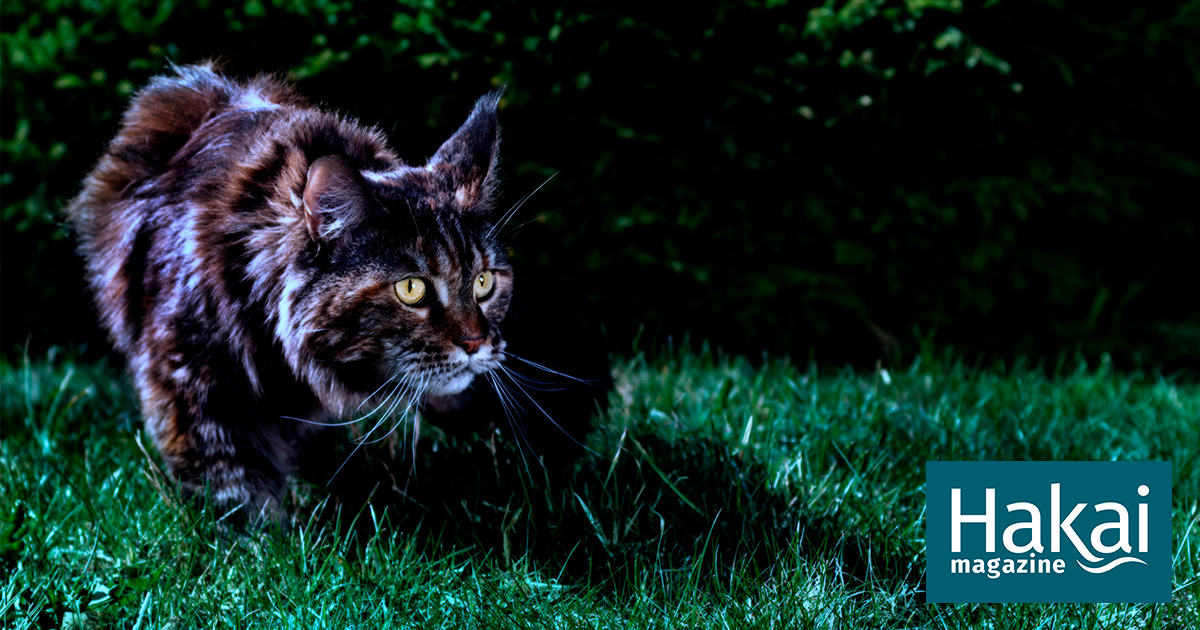The Impact of Cats on Icelandic Wildlife and Society
核心概念
The author argues that the increasing debate over cat curfews in Iceland is driven by concerns about the impact of free-roaming cats on wildlife, particularly birds. The approach highlights the need to balance environmental conservation with pet ownership and societal values.
摘要
In Iceland, the issue of cat curfews has gained prominence due to concerns about the ecological impact of free-roaming cats. The debate revolves around balancing the freedom of cats with protecting vulnerable bird populations. While some advocate for strict curfews to prevent cats from hunting birds, others argue against confining pets based on idiosyncratic preferences and historical cultural norms. The conflict reflects a broader discussion on how human actions affect wildlife and ecosystems, emphasizing the need for informed policies that consider both animal welfare and environmental conservation.
客製化摘要
使用 AI 重寫
產生引用格式
翻譯原文
翻譯成其他語言
產生心智圖
從原文內容
前往原文
hakaimagazine.com
It’s 10 PM. Do You Know Where Your Cat Is? | Hakai Magazine
統計資料
Akureyri has a population of 19,000 people and 2,000 to 3,000 cats.
Feral cats cause approximately 70 percent of bird mortality in some regions.
Cats kill between 1.3 and four billion birds annually in the United States alone.
A controlled study found that grain-free diets reduced bird hunting by about 40 percent in cats.
Australia culled 844,000 feral cats from mid-2015 to mid-2018.
引述
"Each December, Reykjavík plants a gigantic metal cat statue downtown to celebrate the Yule Cat."
"Cats are implicated as one of the worst invasive species globally."
"The ongoing cat wars are often based on idiosyncratic preferences rather than science."
從以下內容提煉的關鍵洞見
by Hakai Magazi... 於 hakaimagazine.com 02-21-2024
https://hakaimagazine.com/features/its-10-pm-do-you-know-where-your-cat-is/
深入探究
How can societies find a balance between preserving wildlife and allowing pet ownership?
Societies can find a balance between preserving wildlife and allowing pet ownership by implementing responsible pet ownership practices. This includes measures such as spaying and neutering pets to control the population, keeping cats indoors during critical times like nesting seasons, providing enrichment for indoor cats to prevent boredom and hunting instincts, using deterrents like bells or colorful collars to reduce hunting success rates, and supporting trap-neuter-release programs for feral cat populations. Additionally, education plays a crucial role in raising awareness about the impact of free-roaming cats on wildlife and promoting coexistence between pets and local ecosystems.
How does cultural perception influence policies regarding animal control?
Cultural perceptions play a significant role in shaping policies regarding animal control. For example, in Iceland where there is a strong tradition of cat companionship dating back centuries, the debate over imposing curfews on outdoor cats reflects shifting attitudes towards balancing environmental conservation with pet ownership. In some cultures, cats are seen as symbols of luck or cleanliness while in others they may be associated with superstitions or ill fortune. These cultural beliefs can influence how communities view free-roaming animals and determine whether restrictions should be imposed based on ecological concerns or ethical considerations.
What are the ethical implications of imposing curfews or restrictions on free-roaming animals?
Imposing curfews or restrictions on free-roaming animals raises several ethical considerations. On one hand, there is an obligation to protect native wildlife from predation by domestic pets like cats which can have detrimental effects on bird populations and ecosystems. By restricting outdoor access for pets through curfews or containment measures, society aims to mitigate these impacts and uphold principles of environmental stewardship.
However, from an ethical standpoint concerning animal welfare, limiting the freedom of animals that have historically roamed outdoors poses challenges. Cats are solitary hunters with natural instincts to explore their surroundings which could lead to stress if confined indoors permanently. Balancing the well-being of individual animals with broader conservation goals requires thoughtful consideration of both ecological consequences and humane treatment when implementing policies related to animal control.
0
